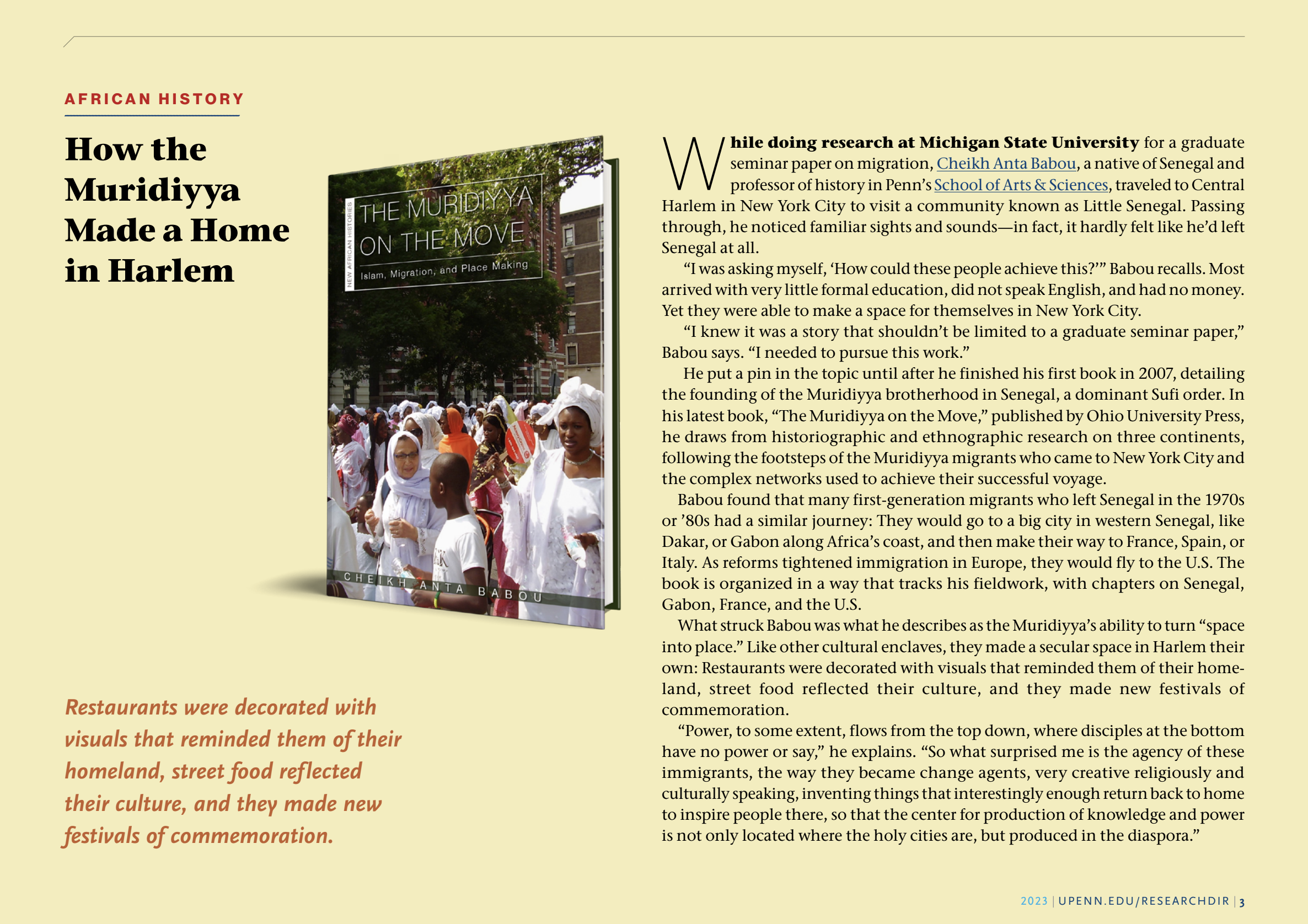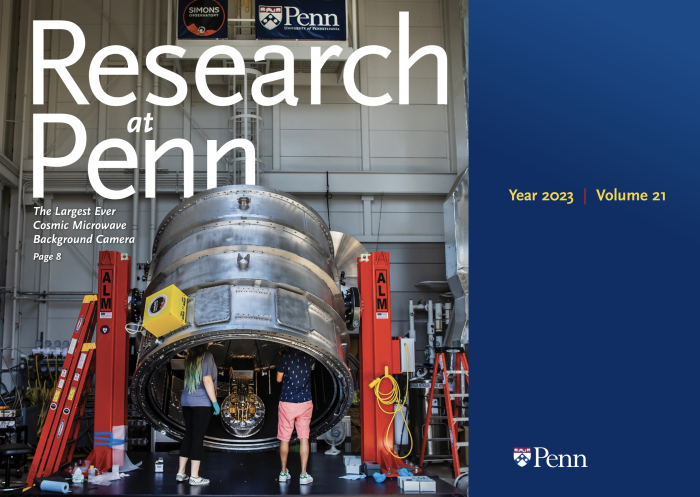
Full annual report at www.upenn.edu/researchdir
How the Muridiyya Made a Home in Harlem
While doing research at Michigan State University for a graduate seminar paper on migration, Cheikh Anta Babou, a native of Senegal and professor of history in Penn’s School of Arts & Sciences, traveled to Central Harlem in New York City to visit a community known as Little Senegal. Passing through, he noticed familiar sights and sounds—in fact, it hardly felt like he’d left Senegal at all.
“I was asking myself, ‘How could these people achieve this?’” Babou recalls. Most arrived with very little formal education, did not speak English, and had no money. Yet they were able to make a space for themselves in New York City. “I knew it was a story that shouldn’t be limited to a graduate seminar paper,” Babou says. “I needed to pursue this work.”
He put a pin in the topic until after he finished his first book in 2007, detailing the founding of the Muridiyya brotherhood in Senegal, a dominant Sufi order. In his latest book, “The Muridiyya on the Move,” published by Ohio University Press, he draws from historiographic and ethnographic research on three continents, following the footsteps of the Muridiyya migrants who came to New York City and the complex networks used to achieve their successful voyage.
Babou found that many first-generation migrants who left Senegal in the 1970s or ’80s had a similar journey: They would go to a big city in western Senegal, like Dakar, or Gabon along Africa’s coast, and then make their way to France, Spain, or Italy. As reforms tightened immigration in Europe, they would fly to the U.S. The book is organized in a way that tracks his fieldwork, with chapters on Senegal, Gabon, France, and the U.S.
What struck Babou was what he describes as the Muridiyya’s ability to turn “space into place.” Like other cultural enclaves, they made a secular space in Harlem their own: Restaurants were decorated with visuals that reminded them of their homeland, street food reflected their culture, and they made new festivals of commemoration.
“Power, to some extent, flows from the top down, where disciples at the bottom have no power or say,” he explains. “So what surprised me is the agency of these immigrants, the way they became change agents, very creative religiously and culturally speaking, inventing things that interestingly enough return back to home to inspire people there, so that the center for production of knowledge and power is not only located where the holy cities are, but produced in the diaspora.”
Research at Penn
As one of the top research universities in the world, Penn generates important new knowledge in medicine, technology, business, social science, humanities, and beyond, and applies this knowledge to improve the lives of individuals and communities at home and around the globe. Research at Penn is an annual publication that highlights some of the groundbreaking and innovative research happening across the University’s 12 schools.

